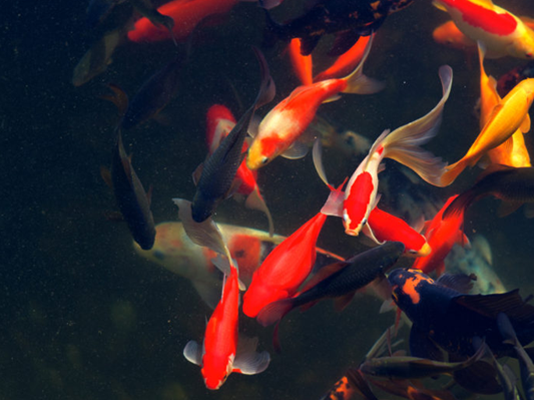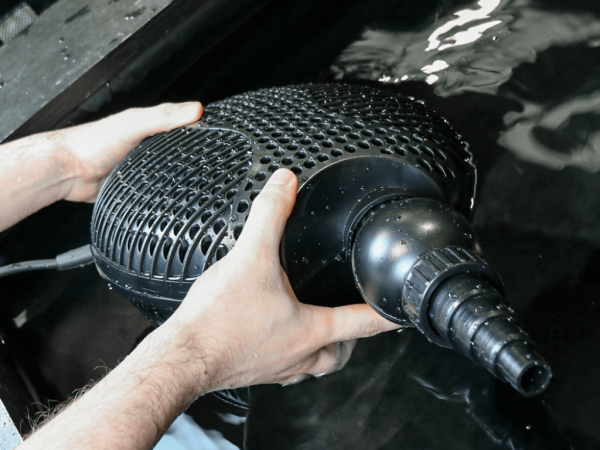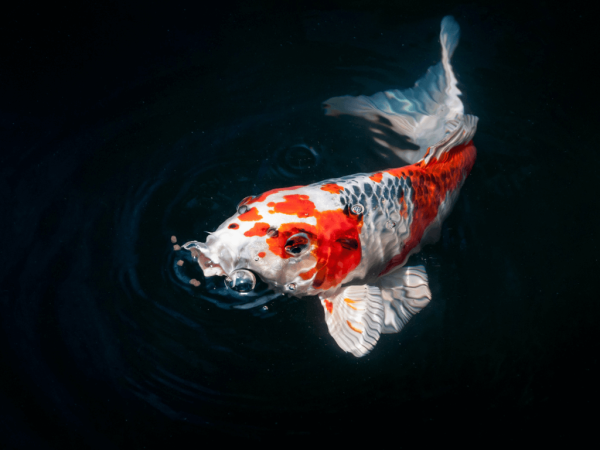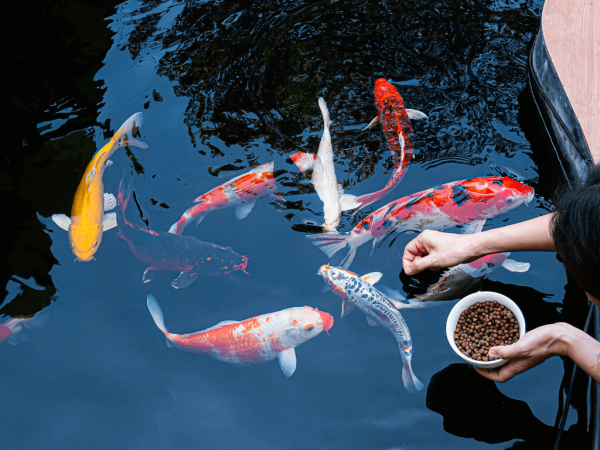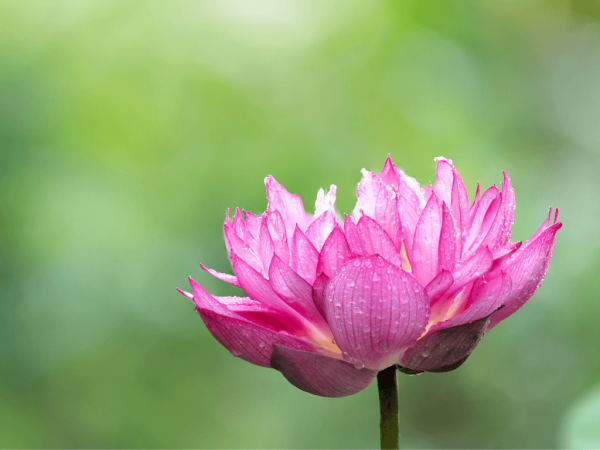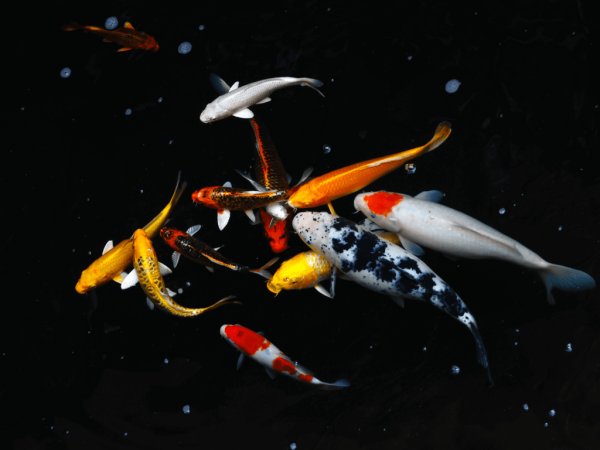How to select fish for your pond
Buying pond fish should be one of the most pleasurable sides to owning a pond, but there are a few things to look out for before you commit.
Time of year
Our climate is highly changeable with the seasons and UK pond water temperature can change from nearly zero Celsius to the mid-20s. This can play havoc with a pond fish’s metabolism and immunity, so they shouldn’t be moved, bought or sold at certain times of the year. Use a pond thermometer to monitor water temperature and don’t consider buying new pond fish until the water is above 10 Celsius.
If your pond is unheated year-round buy local fish which are also outside. If they’re kept inside the aquatic store wait until your pond water temperature reaches 15 Celsius or more so as not to stress the newly purchased fish with temperature shock.
Some koi and goldfish come from warm countries like Israel and Thailand, so if you take those warm-water fish and dump them into your freezing pond at best they may lie on their sides or huddle together on the bottom but at worst they may get Whitespot and die. Unless your pond is heated the fish buying season is late spring, summer and early autumn.
New ponds
New ponds take time to mature and build up a population of beneficial bacteria in the filter. As large as any new pond is, it may still develop water quality issues if you add too many fish too soon. Don’t add more than six at a time, add filter bacteria, and test the water before and after buying new fish.
Transportation and acclimation
Fish will be transported in polythene bags, even large koi, and then if necessary they can also be placed into polystyrene boxes for transportation. Tell the seller how long it will take you to get home as that will affect how many fish are placed in each bag, and if they use oxygen or not.
Go straight home and float the unopened bags on the pond surface. This will equalise the temperatures, then open the bags and introduce pond water over the next twenty to thirty minutes.
Release the fish, discard the old bag water and observe over the next few days. Newly purchased fish are prone to hiding and jumping, so place a net over the pond for the first few days. Test water and check the newly purchased fish for signs of disease. A separate quarantine pond is ideal, although not every pond owner has that luxury.
Research
Most pond fish will mix together although avoid adding very small fish to ponds containing very large fish as they may be eaten. Research the adult size of your potential purchases to ensure that they won’t outgrow the pond. Koi carp and Sturgeon grow very large, so need a pond to match. Here are some of the most popular pond fish and what you need to know about them:
Koi carp, Cyprinus carpio
Koi carp originated in Japan and are some of the most highly prized ornamental fish in the world. Capable of lengths of one metre, these very large carp need large, deep ponds and big filtration systems which are capable of processing their copious amounts of waste. Most koi grow to two feet in length, even in small ponds, so a pond size of at least 12’x9’x3’ is recommended, but ideally, 18’x12’x4’ and 5000 gallons or 22,000 litres is better. Buy small koi for the best value as they grow fast. Feed a floating koi pellet.
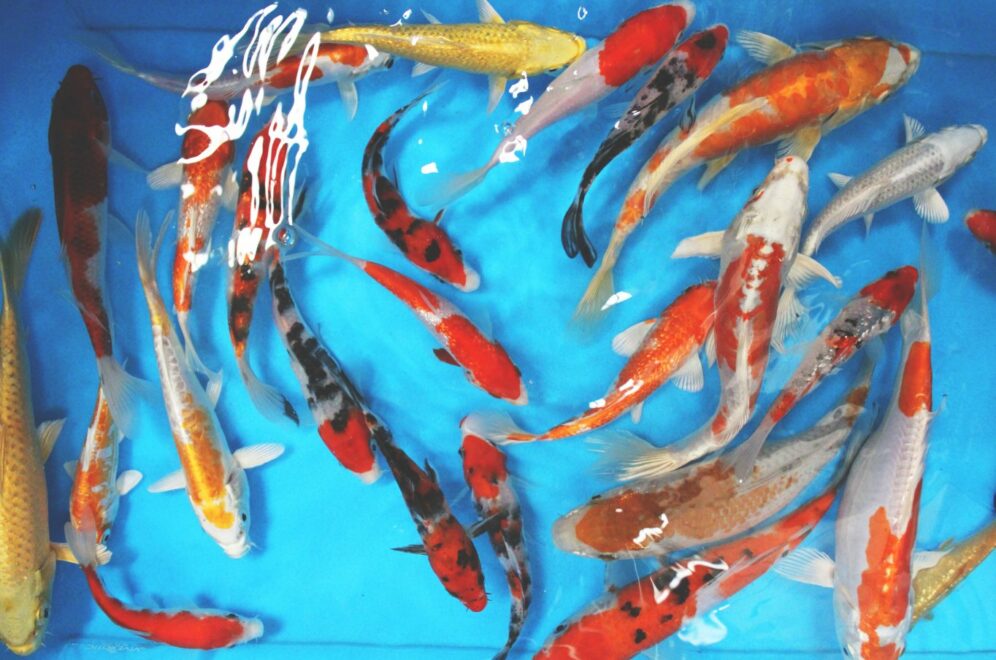
Ghost koi, Cyprinus carpio (var)
Ghost koi are a cross between koi and wild type Mirror carp. They are cheap, hardy and fast-growing and suitable for all large ponds. They typically reach a size of two feet in length or more and are deep-bodied fish producing lots of waste. Keep as for koi carp, above.
Mirror carp/common carp, Cyprinus carpio
Mirror carp and common carp are popular fish with anglers and can attain sizes of over three feet in length and up to 100lbs in weight. In garden ponds, they rarely break the two-foot barrier but are deep-bodied fish with voracious appetites. Their dark skin colouration may mean that you won’t always see them either. Keep as for koi carp, above.
Goldfish, Carassius auratus
Common goldfish are the best choice for ponds as they stay relatively small, are brightly coloured, cheap, widely available and hardy. They are easy to breed too. They grow to about 12”/30cm in length and require ponds upwards of 100 gallons/450 litres.
Sarasa comet, Carassius auratus
Sarasa comets are red and white goldfish with long tails, and they make great pond fish. They can grow to about 14”/35cm long and are active fish, so require a pond upwards of 150 gallons 681 litres. They are easy to breed and make ideal companions for goldfish and shubunkins.
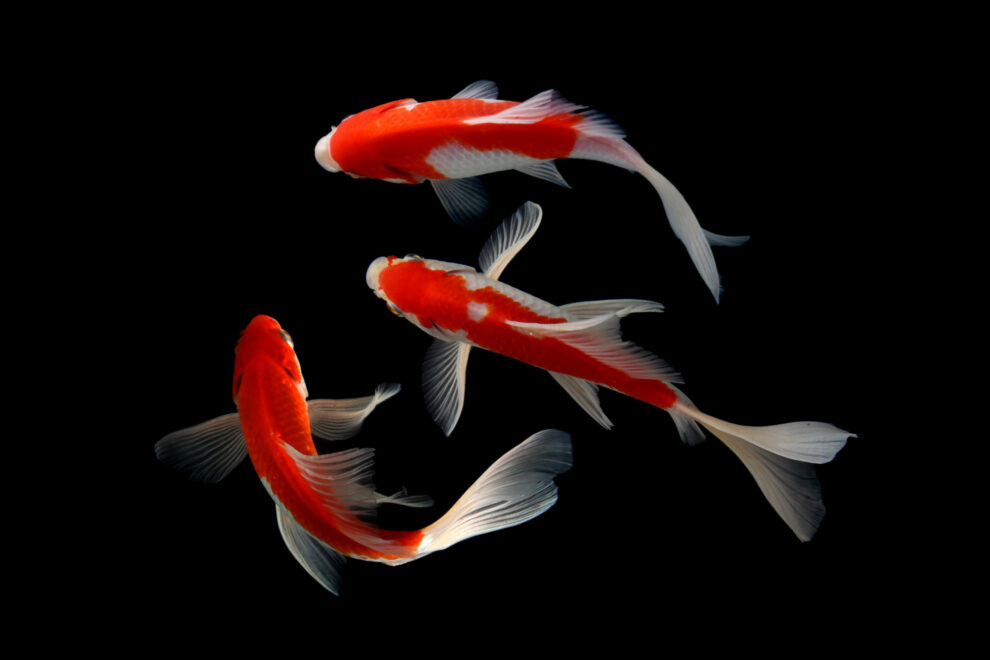
Shubunkin, Carassius auratus
Shubunkins are calico (also known as nacreous,) goldfish, available either with short fins or comet tails. They typically stay below 12”/30cm adult length and are hardy and easy to keep. Their mottled colours may also give them a little more protection from herons flying over. Easy to breed and recommended for any fish ponds over 100 gallons/454 litres.
Orfe, Leucisus idus
Orfe come in golden and blue forms, and are large, slender fish requiring large, well-oxygenated ponds and lakes. Surface dwellers, they can jump, and suffer from low oxygen problems in high summer. Capable of growing up to 30”/75cm in length and needing to be kept in groups, Orfe need a pond of 18’x12’x3’ deep or larger, (4000 gallons/18000 litres) long term. Sensitive to some medications.
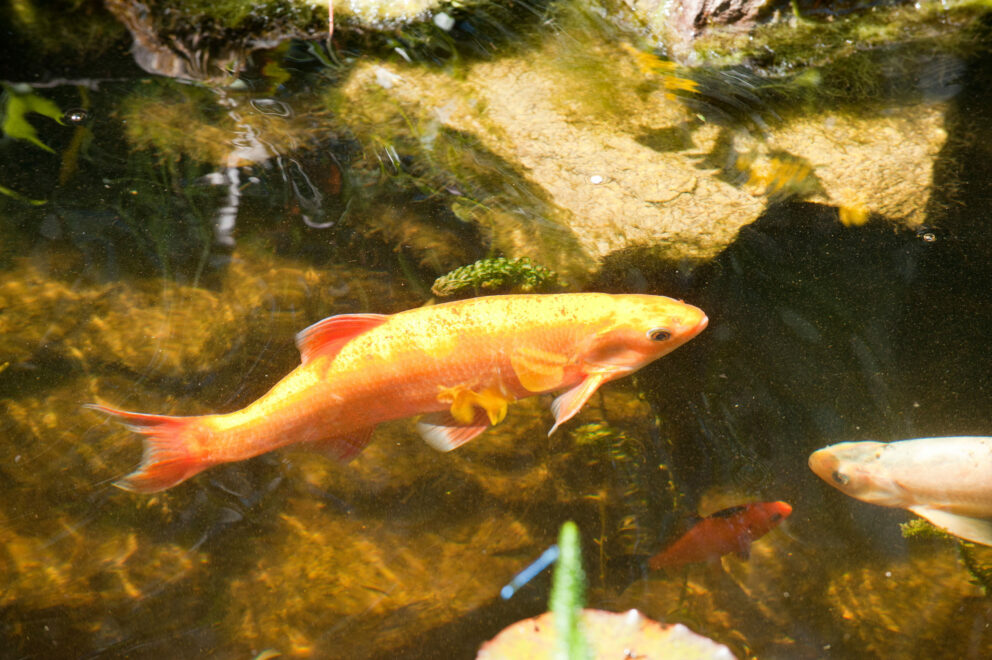
Rudd, Scardinius erythropthalmus
Rudd can be found in lakes and rivers across the UK and “golden rudd” are popular pond fish. Like Orfe they are surface-dwelling shoalers with a high oxygen requirement, although they stay much smaller on average. Not as visible as goldfish or golden orfe, they are popular with pond owning anglers for obvious reasons. Average size 6-12”, pond size 9x6x2’ (675 gallons/ 3000 litres, upwards.)
Tench, Tinca tinca
Tench are another popular fish with anglers, and pond tench come in both traditional green and gold forms. Bottom dwellers, you won’t see the dark green ones against the dark pond liner, hence the gold versions. Shy fish, they are capable of average lengths up to 18”/45cm and require ponds 12x12x3’ 2700 gallons/12,000 litres and larger.
Grass carp, Ctenopharyngodon idella
Grass carp are used in lakes to control vegetation, although their use in garden ponds as natural blanketweed munchers is limited. They are surface-dwelling, large growing fish which are grey, silver in colour and don’t look like the barbled, deep-bodied carp we know and love. They are frequent jumpers too. Only suitable for very large ponds and lakes, 20x12x2.5’, 3750 gallons/17025 litres and above.
Sterlet/Sturgeon, Acipenser spp.
Sterlets and sturgeon are ancient-looking fish which date back to prehistoric times. Freshwater fish, Sturgeon used to inhabit the worlds largest coldwater rivers and hold the record as the largest freshwater fish on earth. The species of sturgeon and sterlets we keep can still attain a size of 3-6’ in length and need weed-free, fast-flowing, well-oxygenated water which stays cool in summer.
Can be kept with standard pond fish but need a specialised sterlet sinking pellet and are sensitive to some medications. Often succumb in warm, weedy ponds with low oxygen levels, but remain popular because of their novelty and shark-like looks.
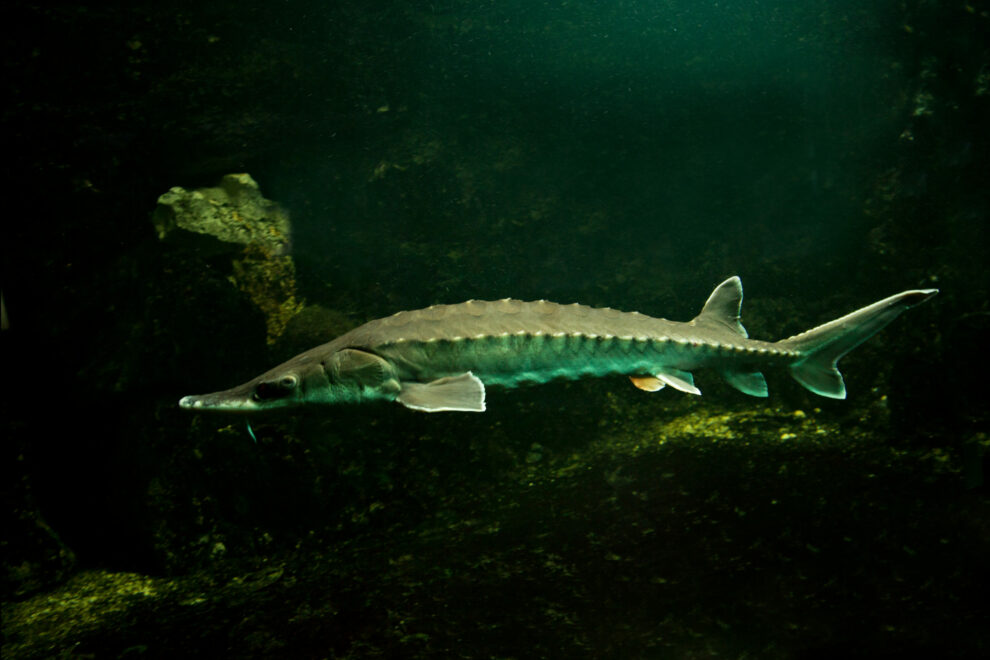
Other British natives
British native coldwater fish are growing in popularity and availability. Bream, gudgeon, barbel, roach, trout, chub, minnows and sticklebacks are all now available, though all require cool well oxygenated, ideally running water, are elusive, and virtually impossible to see from above because of their camouflage.
Bream and Chub grow huge, Chub predate small fish and trout jump out, eat small fish and die in warm ponds, native fish may also carry parasites depending on where they were sourced from so beware, but the addition of some Sticklebacks into an otherwise fishless wildlife pond can be interesting, especially if they breed.
The golden rules of keeping pond fish
- All fish ponds need filters to break down fish waste unless they are very large ponds, or very sparsely stocked.
- Fish should be fed daily and partial water changes conducted regularly, just like an aquarium.
- Pond fish are susceptible to many diseases so check for signs of ill health when feeding and use medications when necessary.
- Arm yourself with a pond thermometer and test kits for pH, ammonia, nitrite and nitrate.
- Smaller pond fish are predated by Herons so keep ponds covered or use Heron deterrents.
- Never release unwanted pond fish into native waterways.
- Don’t buy pond fish with any signs of ill health.




